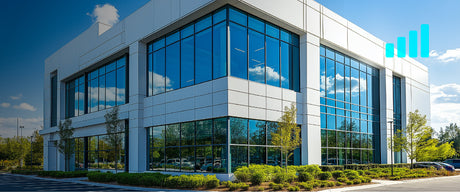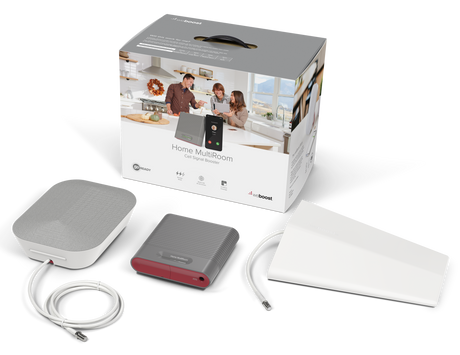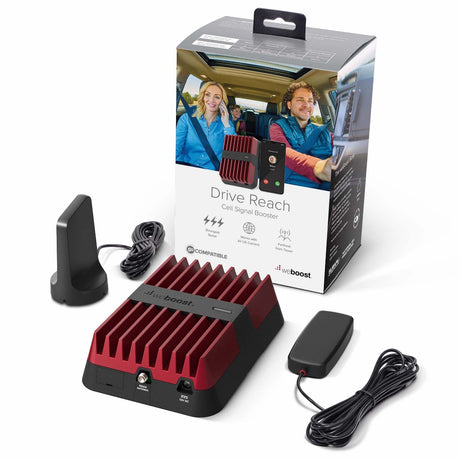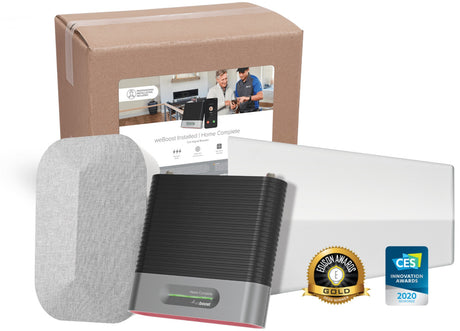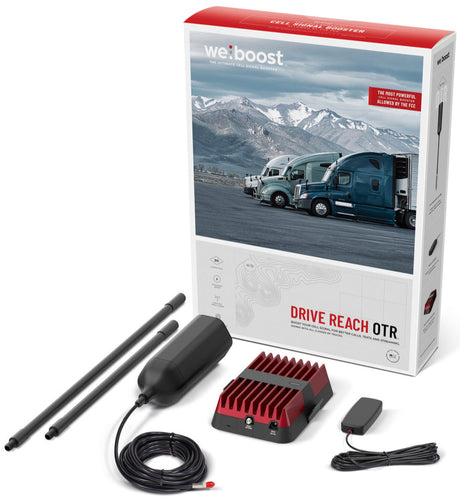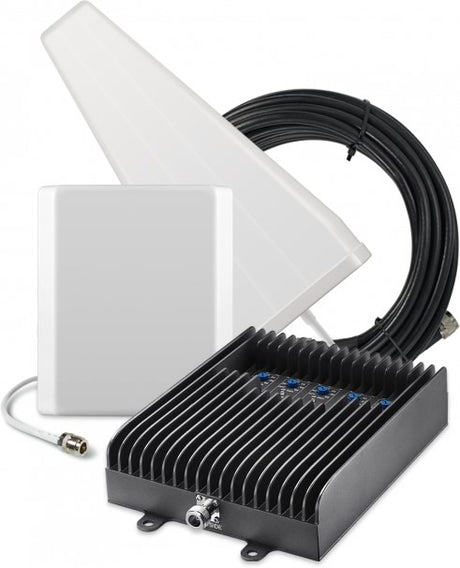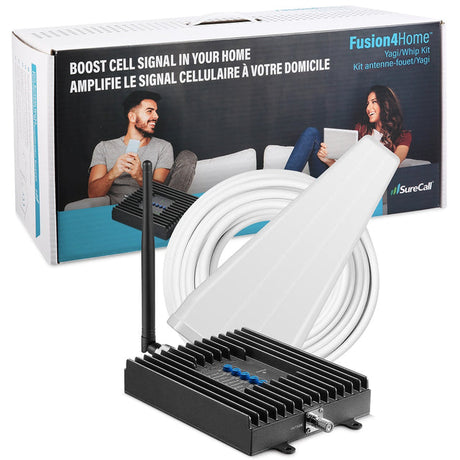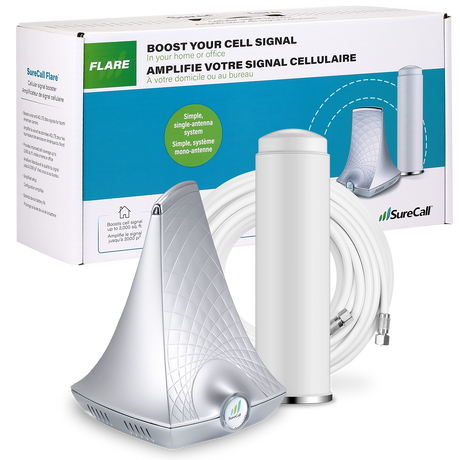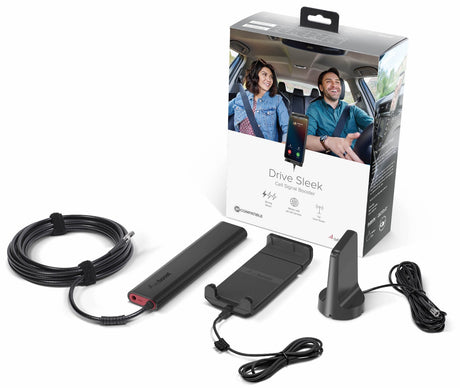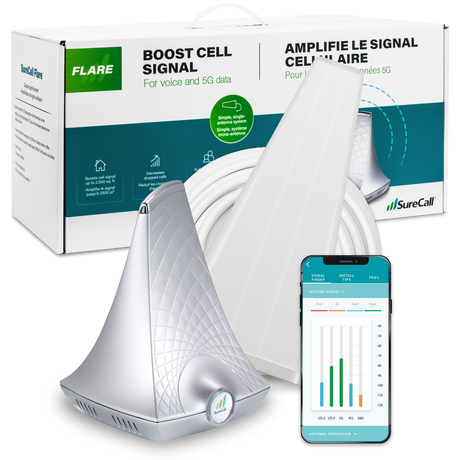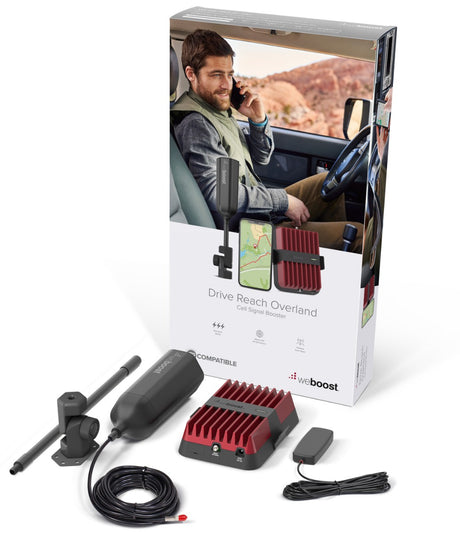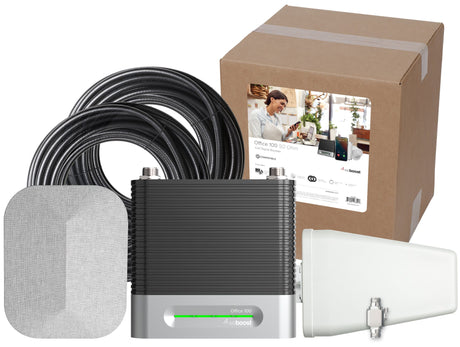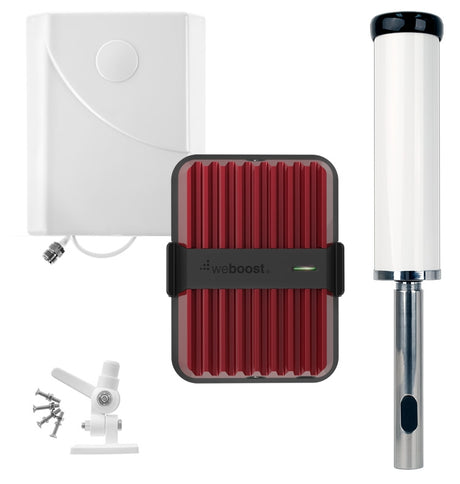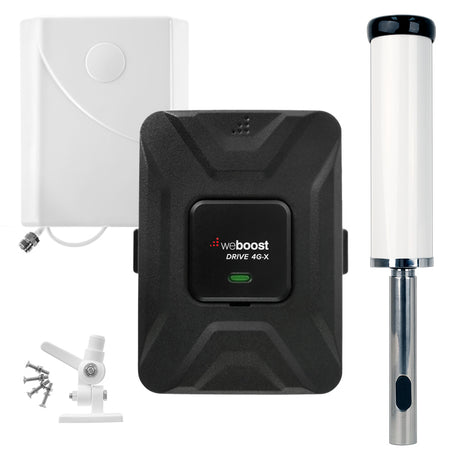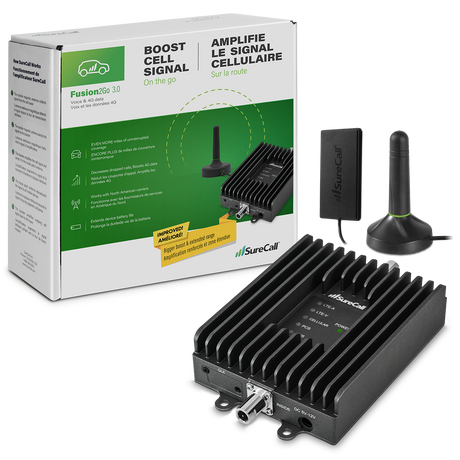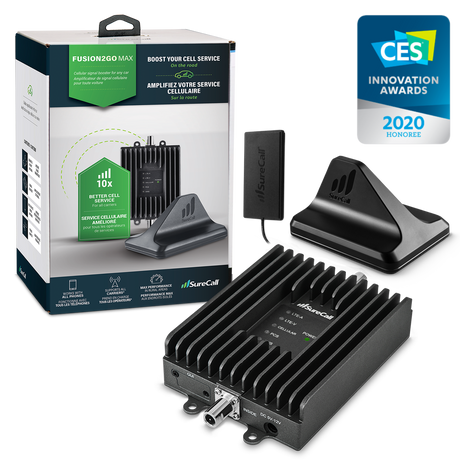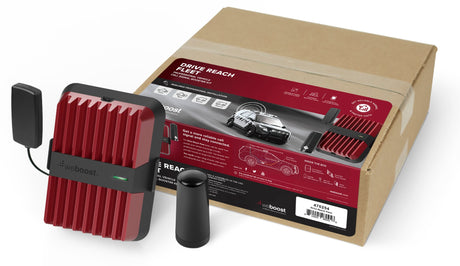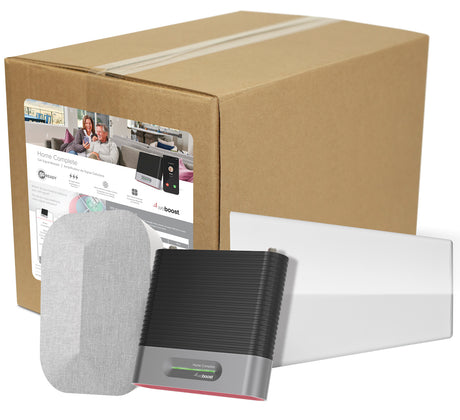Struggling with dropped calls, sluggish data, or dead zones in your home, office, or vehicle? You’re not alone, and the good news is: there’s a solution. Whether you're working from home, driving through remote areas, or managing a business, a cell phone signal booster can drastically improve your connectivity.
What is a Cell Phone Signal Booster?
A cell phone signal booster (also called a cellular repeater or signal amplifier) improves weak reception for voice, text, and data by strengthening existing carrier signal from towers like Verizon, AT&T, and T-Mobile. Boosters are FCC-certified systems that work with most phones and hotspots, supporting 4G LTE and 5G on authorized bands to reduce dropped calls, increase upload/download speeds, and expand reliable coverage at home, in the office, or on the road.
How Does a Cell Phone Booster Work?
Boosters don't create signal; they capture, amplify, and rebroadcast what's already outside. An outside (donor) antenna pulls in signal from the nearest cell site, a bi-directional amplifier adds gain (measured in dB), and an inside antenna redistributes stronger signal indoors. The system uses coaxial cable to connect components and also boosts your phone's uplink back to the tower for clearer calls and faster data.
For best results, you need at least a small amount of usable outdoor signal (check phone field-test dBm). Proper antenna separation prevents oscillation, and thoughtful placement overcomes building materials that block RF (metal, concrete, low-E glass).
Different Types You Can Buy
Home & Office (Building) Boosters
Scaled by coverage area (single room to multi-floor), outside signal strength, and cable runs. Pair with the right outside antenna: omnidirectional for multi-tower environments; directional Yagi/LPDA for longer reach to one tower or rural installs. Inside, choose panel or dome antennas based on layout.
Vehicle Boosters
Compact, hard-working solutions for cars, trucks, SUVs, RVs, and fleets. External low-profile antennas and cradle or interior antennas keep you connected while moving through weak-signal corridors.
Marine & Specialty
Salt-resistant hardware and high-gain antennas for boats and remote sites.
Single-Carrier vs Multi-Carrier
Single-carrier systems concentrate gain on one network; multi-carrier kits support families and teams using different providers. All consumer boosters must be FCC-approved; many carriers ask you to register your booster before use.
Which One is Best?
Start with three factors: 1) Outside signal, 2) Coverage goal, 3) Carriers/devices.
-
If outdoor signal is strong to moderate, a mid-gain, multi-carrier kit with an omni outside antenna often covers open floor plans.
-
If outdoor signal is weak or distant, choose higher-gain systems with a directional Yagi/LPDA aimed at the nearest tower, plus one or more inside antennas to target key rooms.
-
For data-heavy users, consider external antenna placements that maximize RSRP/RSRQ/SINR; in some cases, a MIMO external antenna + hotspot may complement a booster for peak speeds.
-
For vehicles, pick a road-ready kit sized to your cabin and power options. If you're unsure, use UberSignal's quick Find My Perfect Booster quiz or ask our team to translate dBm readings and floor plans into a precise recommendation.
Why Buy from UberSignal?
UberSignal curates FCC-certified building and vehicle kits, antennas, splitters, and cables-tested combinations that actually work together. You get expert, U.S.-based support before and after purchase, help interpreting signal metrics and choosing omni vs. Yagi/LPDA, and guidance on installation best practices (antenna placement, isolation, cable loss, and coverage design). We offer fast shipping, clear documentation, and real-world troubleshooting to ensure your 5G/LTE voice and data perform as expected.
Whether you're upgrading a small commercial building or office, outfitting a metal building, or equipping your vehicle, UberSignal makes getting the right cell phone signal booster simple, compliant, and effective.



